UST
-
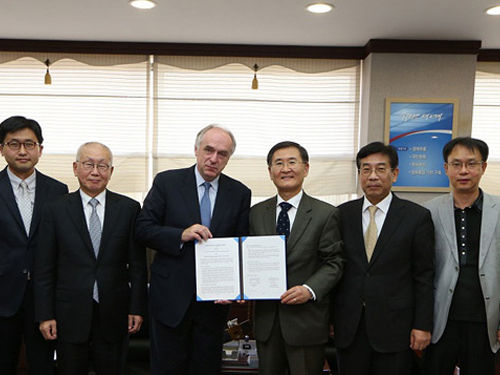 KAIST and the International Institute for Applied Systems Analysis Agree to Cooperate
KAIST signed a cooperation agreement with the International Institute for Applied Systems Analysis (IIASA) on October 29, 2014 at the president’s office.
Established in 1972 and based in Austria as a non-governmental research organization, IIASA is an international scientific institute that conducts policy-oriented research into global problems such as climate change, energy security, or population aging. IIASA examines such issues and devises strategies for cooperative action unconstrained by political and national self-interest.
Dr. Pavel Kabat, the Director General and CEO of IIASA, headed a delegation that visited KAIST to attend the signing ceremony of the agreement. He said, “KAIST has been known as a leading research university, and its strength in the development of green technology and environmental policy will benefit our institution. In particular, we expect to see vibrant exchanges of knowledge and researchers with the Graduate School of Green Growth (GSGG) and the Graduate School of EEWS (energy, environment, water, and sustainability) at KAIST.”
The two organizations will implement joint research projects in the diffusion analysis of green technology, the development and improvement of evaluation models to integrate economy, energy, and environment, the development of an analysis system for water resources, and the establishment of academic workshops and conferences.
The Dean of GSGG, Professor Jae-Kyu Lee said, “IIASA is a well-respected international organization with accumulated knowledge about analysis and prediction techniques. With this agreement, we hope that KAIST will intensify its research capacity in environmental science and lead education and research in green growth and environmental technology.”
The picture below shows Dr. Pavel Kabat, the Director General and CEO of IIASA, on the left and President Steve Kang of KAIST on the right holding the signed agreement with professors from GSGG and EEWS Graduate School including Professor Jae-Kyu Lee, to the right of President Kang.
2014.11.05 View 11666
KAIST and the International Institute for Applied Systems Analysis Agree to Cooperate
KAIST signed a cooperation agreement with the International Institute for Applied Systems Analysis (IIASA) on October 29, 2014 at the president’s office.
Established in 1972 and based in Austria as a non-governmental research organization, IIASA is an international scientific institute that conducts policy-oriented research into global problems such as climate change, energy security, or population aging. IIASA examines such issues and devises strategies for cooperative action unconstrained by political and national self-interest.
Dr. Pavel Kabat, the Director General and CEO of IIASA, headed a delegation that visited KAIST to attend the signing ceremony of the agreement. He said, “KAIST has been known as a leading research university, and its strength in the development of green technology and environmental policy will benefit our institution. In particular, we expect to see vibrant exchanges of knowledge and researchers with the Graduate School of Green Growth (GSGG) and the Graduate School of EEWS (energy, environment, water, and sustainability) at KAIST.”
The two organizations will implement joint research projects in the diffusion analysis of green technology, the development and improvement of evaluation models to integrate economy, energy, and environment, the development of an analysis system for water resources, and the establishment of academic workshops and conferences.
The Dean of GSGG, Professor Jae-Kyu Lee said, “IIASA is a well-respected international organization with accumulated knowledge about analysis and prediction techniques. With this agreement, we hope that KAIST will intensify its research capacity in environmental science and lead education and research in green growth and environmental technology.”
The picture below shows Dr. Pavel Kabat, the Director General and CEO of IIASA, on the left and President Steve Kang of KAIST on the right holding the signed agreement with professors from GSGG and EEWS Graduate School including Professor Jae-Kyu Lee, to the right of President Kang.
2014.11.05 View 11666 -
 The Hancom and KAIST Research Center Opens
KAIST and Hancom, Inc., an office suite developer in Korea, established a joint research center to develop software technology and its related industry. President Steve Kang of KAIST, Sang-Chul Kim, the Chief Executive Officer (CEO) of Hancom, and professors from the computer science department at KAIST attended a ceremony to celebrate the opening of the center.
KAIST and Hancom signed a memorandum of understanding in April this year for the development of software industry in Korea, and based on the agreement, the two institutions identified five research projects and created a research center to implement them effectively.
President Kang said, “I hope that the research center will serve as a good example of university and industry collaboration. To that end, we will provide our support to the maximum extent possible to lead the software industry in Korea. We are also planning to hold a joint workshop on the latest trends in software technology and on the education of software developers.”
Established in 1990, Hancom created the native word processor for the Korean language called “Hangul.”
2014.11.05 View 8883
The Hancom and KAIST Research Center Opens
KAIST and Hancom, Inc., an office suite developer in Korea, established a joint research center to develop software technology and its related industry. President Steve Kang of KAIST, Sang-Chul Kim, the Chief Executive Officer (CEO) of Hancom, and professors from the computer science department at KAIST attended a ceremony to celebrate the opening of the center.
KAIST and Hancom signed a memorandum of understanding in April this year for the development of software industry in Korea, and based on the agreement, the two institutions identified five research projects and created a research center to implement them effectively.
President Kang said, “I hope that the research center will serve as a good example of university and industry collaboration. To that end, we will provide our support to the maximum extent possible to lead the software industry in Korea. We are also planning to hold a joint workshop on the latest trends in software technology and on the education of software developers.”
Established in 1990, Hancom created the native word processor for the Korean language called “Hangul.”
2014.11.05 View 8883 -
 Development of a Photonic Diode with Light Speed, Single-Direction Transfer
A photonic diode using a nitride semiconductor rod can increase the possibility of developing all-optical integrated circuits, an alternative to conventional integrated circuits.
Professor Yong-Hoon Cho's research team from the Department of Physics, KAIST, developed a photonic diode which can selectively transfer light in one way, using semiconductor rods.
The photonic diode has a diameter of hundreds of nanometers (nm) and a length of few micrometers. This size enables its use in large-scale integration (LSI). The diode’s less sensitivity towards polarized light angle makes it more useful.
In an integrated circuit, a diode controls the flow of electrons. If this diode controls light rather than electrons, data can be transferred at high speed, and its loss is minimized to a greater extent. Since these implementations conserve more energy, this is a very promising future technology.
However, conventional electronic diodes, made up of asymmetric meta-materials or photonic crystalline structures, are large, which makes them difficult to be used in LSI. These diodes could only be implemented under limited conditions due to its sensitivity towards polarized light angle.
The research team used nitride semiconductor rods to develop a highly efficient photonic diode with distinct light intensities from opposite ends.
The semiconductor rod yields different amount of energy horizontally. According to the research team, this is because the width of the quantum well and its indium quantity is continuously controlled.
Professor Cho said, "A large energy difference in a horizontal direction causes asymmetrical light propagation, enabling it to be operated as a photonic diode." He added that “If light, instead of electrons, were adopted in integrated circuits, the transfer speed would be expected as great as that of light.”
The research findings were published in the September 10th issue of Nano Letters as the cover paper.
Under the guidance of Professor Cho, two Ph.D. candidates, Suk-Min Ko and Su-Hyun Gong, conducted this research. This research project was sponsored by the National Research Foundation of Korea and KAIST’s EEWS (energy, environment, water, and sustainability) Research Center.
Figure Description: Computer simulated image of photonic diode made of semiconductor rod implemented in an all-optical integrated circuit
2014.09.23 View 12695
Development of a Photonic Diode with Light Speed, Single-Direction Transfer
A photonic diode using a nitride semiconductor rod can increase the possibility of developing all-optical integrated circuits, an alternative to conventional integrated circuits.
Professor Yong-Hoon Cho's research team from the Department of Physics, KAIST, developed a photonic diode which can selectively transfer light in one way, using semiconductor rods.
The photonic diode has a diameter of hundreds of nanometers (nm) and a length of few micrometers. This size enables its use in large-scale integration (LSI). The diode’s less sensitivity towards polarized light angle makes it more useful.
In an integrated circuit, a diode controls the flow of electrons. If this diode controls light rather than electrons, data can be transferred at high speed, and its loss is minimized to a greater extent. Since these implementations conserve more energy, this is a very promising future technology.
However, conventional electronic diodes, made up of asymmetric meta-materials or photonic crystalline structures, are large, which makes them difficult to be used in LSI. These diodes could only be implemented under limited conditions due to its sensitivity towards polarized light angle.
The research team used nitride semiconductor rods to develop a highly efficient photonic diode with distinct light intensities from opposite ends.
The semiconductor rod yields different amount of energy horizontally. According to the research team, this is because the width of the quantum well and its indium quantity is continuously controlled.
Professor Cho said, "A large energy difference in a horizontal direction causes asymmetrical light propagation, enabling it to be operated as a photonic diode." He added that “If light, instead of electrons, were adopted in integrated circuits, the transfer speed would be expected as great as that of light.”
The research findings were published in the September 10th issue of Nano Letters as the cover paper.
Under the guidance of Professor Cho, two Ph.D. candidates, Suk-Min Ko and Su-Hyun Gong, conducted this research. This research project was sponsored by the National Research Foundation of Korea and KAIST’s EEWS (energy, environment, water, and sustainability) Research Center.
Figure Description: Computer simulated image of photonic diode made of semiconductor rod implemented in an all-optical integrated circuit
2014.09.23 View 12695 -
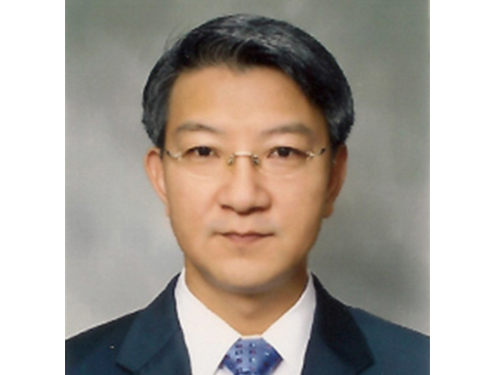 Distinguished Professor Sang Yup Lee Participates in the 2014 Summer Davos Forum
Distinguished Professor Sang Yup Lee from the Department of Chemical and Biomolecular Engineering, KAIST, was invited to lead four sessions at the Annual Meeting 2014, the World Economic Forum, also known as the Summer Davos Forum, which was held in Tianjin, China, from September 10th to 12th.
Two of the four sessions Professor Lee participated in were held on September 10th. At the first session entitled “Biotechnology Ecosystem,” he examined with other panelists the future of bioengineering in depth and discussed major policies and industry trends that will be necessary for the development of future biotechnologies.
Professor Lee later attended the “Strategic Shifts in Healthcare” session as a moderator. Issues related to transforming the health industry such as the next-generation genomics, mobile health and telemedicine, and wearable devices and predictive analytics were addressed.
On September 12, Professor Lee joined the “IdeasLab with KAIST” and gave a presentation on nanotechnology. There was a total of ten IdeasLab sessions held at the Summer Davos Forum, and KAIST was the only Korean university ever invited to host this session. In addition to Professor Lee’s presentation, three more presentations were made by KAIST professors on such topics as “Sustainable Energy and Materials” and “Next-generation Semiconductors.”
Lastly, Professor Lee participated in the “Global Promising Technology” session with the World Economic Forum’s Global Agenda Council members. At this session, he explained the selection of the “World’s Top 10 Most Promising Technologies” and “Bio Sector’s Top 10 Technologies” and led discussions about the “2015 Top 10 Technologies” with the council members.
The Davos Forum has been announcing the “World’s Top 10 Most Promising Technologies” since 2012, and Professor Lee has played a key role in the selection while working as the Chairman of Global Agenda Council. The selection results are presented at the Davos Forum every year and have attracted a lot of attention from around the world.
2014.09.15 View 13717
Distinguished Professor Sang Yup Lee Participates in the 2014 Summer Davos Forum
Distinguished Professor Sang Yup Lee from the Department of Chemical and Biomolecular Engineering, KAIST, was invited to lead four sessions at the Annual Meeting 2014, the World Economic Forum, also known as the Summer Davos Forum, which was held in Tianjin, China, from September 10th to 12th.
Two of the four sessions Professor Lee participated in were held on September 10th. At the first session entitled “Biotechnology Ecosystem,” he examined with other panelists the future of bioengineering in depth and discussed major policies and industry trends that will be necessary for the development of future biotechnologies.
Professor Lee later attended the “Strategic Shifts in Healthcare” session as a moderator. Issues related to transforming the health industry such as the next-generation genomics, mobile health and telemedicine, and wearable devices and predictive analytics were addressed.
On September 12, Professor Lee joined the “IdeasLab with KAIST” and gave a presentation on nanotechnology. There was a total of ten IdeasLab sessions held at the Summer Davos Forum, and KAIST was the only Korean university ever invited to host this session. In addition to Professor Lee’s presentation, three more presentations were made by KAIST professors on such topics as “Sustainable Energy and Materials” and “Next-generation Semiconductors.”
Lastly, Professor Lee participated in the “Global Promising Technology” session with the World Economic Forum’s Global Agenda Council members. At this session, he explained the selection of the “World’s Top 10 Most Promising Technologies” and “Bio Sector’s Top 10 Technologies” and led discussions about the “2015 Top 10 Technologies” with the council members.
The Davos Forum has been announcing the “World’s Top 10 Most Promising Technologies” since 2012, and Professor Lee has played a key role in the selection while working as the Chairman of Global Agenda Council. The selection results are presented at the Davos Forum every year and have attracted a lot of attention from around the world.
2014.09.15 View 13717 -
 Professor Ilkwon Oh Receives the Energy Technology Innovation Award
Professor Ilkwon Oh from the Division of Ocean Systems Engineering at the School of Mechanical and Aerospace Engineering, KAIST, received the Energy Technology Innovation Award at the Energy Tech Insight 2014 Conference, which was held on August 28, 2014 at COEX in Seoul. The conference was co-hosted by the Ministry of Trade, Industry & Energy, Republic of Korea, and the Korea Institute of Energy Technology Evaluation and Planning.
Professor Oh has been recognized for his distinguished research on a synthetic technology to develop 3-dimensional carbon nanostructures based on defect engineering and for his efforts to apply this technology to produce cathode materials for high performance, high density lithium-ion secondary batteries.
In 2010, the Ministry of Education, the Republic of Korea, and the National Research Foundation of Korea included Professor Oh's research in the 100 Best Research in Basic Sciences of the Year, and the 50 Best Research in Basic Sciences in 2012 and 2014, respectively.
2014.09.07 View 9946
Professor Ilkwon Oh Receives the Energy Technology Innovation Award
Professor Ilkwon Oh from the Division of Ocean Systems Engineering at the School of Mechanical and Aerospace Engineering, KAIST, received the Energy Technology Innovation Award at the Energy Tech Insight 2014 Conference, which was held on August 28, 2014 at COEX in Seoul. The conference was co-hosted by the Ministry of Trade, Industry & Energy, Republic of Korea, and the Korea Institute of Energy Technology Evaluation and Planning.
Professor Oh has been recognized for his distinguished research on a synthetic technology to develop 3-dimensional carbon nanostructures based on defect engineering and for his efforts to apply this technology to produce cathode materials for high performance, high density lithium-ion secondary batteries.
In 2010, the Ministry of Education, the Republic of Korea, and the National Research Foundation of Korea included Professor Oh's research in the 100 Best Research in Basic Sciences of the Year, and the 50 Best Research in Basic Sciences in 2012 and 2014, respectively.
2014.09.07 View 9946 -
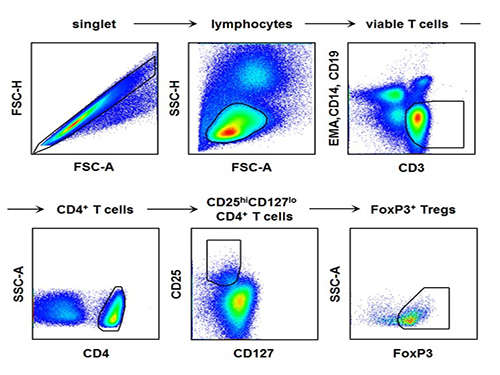 Regulatory T Cells Influence Liver Damage of Hepatitis A Patients
Liver damage becomes more severe with the decrease of regulatory T cells
“This research will aid the development of hepatitis A targeted drug,” said a KAIST researcher.
The KAIST Graduate School of Medical Science and Engineering’s Professor Eui-Cheol Shin and his research team have identified the mechanism, explaining how the regulatory T cells are responsible for the body’s immune system and how they have induced liver damage of hepatitis A patients.
The research results were published online in the July 9th edition of ‘Gut,’ the world’s most prominent journal in the field of gastroenterology.
Hepatitis A is an acute form of hepatitis caused by hepatitis A virus. The virus spreads through oral contact and enters the body via digestive organs.
Regulatory T cells play an important role in maintaining the homeostasis of the body’s immune system by inhibiting the activation of other immune cells. In the case of chronic viral infections, regulatory T cells are known to contribute to the duration of the infection, weakening the immune response to virus infections. However, there has been no information on what roles the regulatory T cells perform in the case of acute viral infections.
The research team used the fluorescence flow cytometry technique to determine the number and characteristics of a variety of immune cells, including regulatory T cells, in the blood of hepatitis A patients.
Consequently, the researchers confirmed that the decrease in the regulatory T cells immune inhibitory ability was consistent with a significant reduction in the number of regulatory T cells in the blood of hepatitis A patients. Furthermore, it was identified that the more noticeable decrease of regulatory T cells led to the occurrence of a more severe liver injury.
The analysis of hepatitis A patient’s blood proved that the cause of the decrease in the number and function of regulatory T cells was the increased expression of cell surface protein ‘Fas,’ which induces cell death.
Professor Shin said, “This study is the first case which proposes the mechanism for clinical aspects in not only hepatitis A, but also acute virus infection.” He added on the future prospect of the research that: “In the future, we can prevent tissue damage by inhibiting cell death of regulatory T cells for severe acute viral infections that do not have an effective treatment for the virus itself.”
[Picture]
The picture shows the process of fluorescence flow cytometry technique to study regulatory T cell in the blood of hepatitis A patients.
2014.08.11 View 11285
Regulatory T Cells Influence Liver Damage of Hepatitis A Patients
Liver damage becomes more severe with the decrease of regulatory T cells
“This research will aid the development of hepatitis A targeted drug,” said a KAIST researcher.
The KAIST Graduate School of Medical Science and Engineering’s Professor Eui-Cheol Shin and his research team have identified the mechanism, explaining how the regulatory T cells are responsible for the body’s immune system and how they have induced liver damage of hepatitis A patients.
The research results were published online in the July 9th edition of ‘Gut,’ the world’s most prominent journal in the field of gastroenterology.
Hepatitis A is an acute form of hepatitis caused by hepatitis A virus. The virus spreads through oral contact and enters the body via digestive organs.
Regulatory T cells play an important role in maintaining the homeostasis of the body’s immune system by inhibiting the activation of other immune cells. In the case of chronic viral infections, regulatory T cells are known to contribute to the duration of the infection, weakening the immune response to virus infections. However, there has been no information on what roles the regulatory T cells perform in the case of acute viral infections.
The research team used the fluorescence flow cytometry technique to determine the number and characteristics of a variety of immune cells, including regulatory T cells, in the blood of hepatitis A patients.
Consequently, the researchers confirmed that the decrease in the regulatory T cells immune inhibitory ability was consistent with a significant reduction in the number of regulatory T cells in the blood of hepatitis A patients. Furthermore, it was identified that the more noticeable decrease of regulatory T cells led to the occurrence of a more severe liver injury.
The analysis of hepatitis A patient’s blood proved that the cause of the decrease in the number and function of regulatory T cells was the increased expression of cell surface protein ‘Fas,’ which induces cell death.
Professor Shin said, “This study is the first case which proposes the mechanism for clinical aspects in not only hepatitis A, but also acute virus infection.” He added on the future prospect of the research that: “In the future, we can prevent tissue damage by inhibiting cell death of regulatory T cells for severe acute viral infections that do not have an effective treatment for the virus itself.”
[Picture]
The picture shows the process of fluorescence flow cytometry technique to study regulatory T cell in the blood of hepatitis A patients.
2014.08.11 View 11285 -
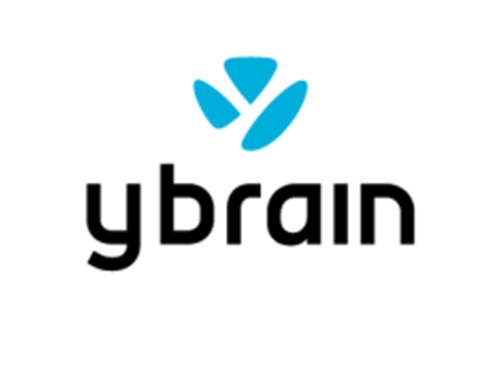 A KAIST startup, YBrain, builds a wearable device to cure Alzheimer's
A group of KAIST graduates from the Departments of Bio and Brain Engineering, Computer Science, Materials Science Engineering, and Industrial Design created a startup called YBrain (http://ybrain.com/). YBrain develops a wearable neuroscience technology to treat or reduce the symptoms of degenerative brain diseases such as dementia and Alzheimer’s. Their recent technological developments were covered in e27, one of the leading blogs based in Singapore. The blog covers topics like the latest technology innovation, startups, and entrepreneurship in Asia. A news article follows below:
e27, June 24, 2014
“This wearable tech may be able to combat effects of Alzheimer’s”
http://e27.co/this-wearable-tech-may-be-able-combat-effects-of-alzheimers-20140624/
2014.06.25 View 13835
A KAIST startup, YBrain, builds a wearable device to cure Alzheimer's
A group of KAIST graduates from the Departments of Bio and Brain Engineering, Computer Science, Materials Science Engineering, and Industrial Design created a startup called YBrain (http://ybrain.com/). YBrain develops a wearable neuroscience technology to treat or reduce the symptoms of degenerative brain diseases such as dementia and Alzheimer’s. Their recent technological developments were covered in e27, one of the leading blogs based in Singapore. The blog covers topics like the latest technology innovation, startups, and entrepreneurship in Asia. A news article follows below:
e27, June 24, 2014
“This wearable tech may be able to combat effects of Alzheimer’s”
http://e27.co/this-wearable-tech-may-be-able-combat-effects-of-alzheimers-20140624/
2014.06.25 View 13835 -
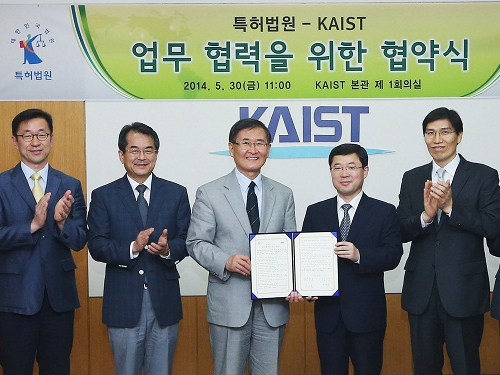 MOU for Intellectual Property Protection and Patent Litigation System Development
KAIST and the Patent Court of Korea signed a memorandum of understanding (MOU) to cooperate for the protection of intellectual property rights and education of patent litigation system. About 20 attendees including President Steve Kang of KAIST and Chief Justice Young-Ho Kang of the Patent Court of Korea met on May 30 at KAIST.
Through the MOU, KAIST will provide technical advice needed for the patent application process. Likewise, the Patent Court will support KAIST researchers and students by offering patent application classes and patent trial observation programs.
After the ceremony, the Patent Court hosted a class under the theme “A more realistic patent process for scientists.”
The first speaker, the Honorable Chun-Woo Son, a former judge, shared a story in which a research achievement was wasted because of scientists’ ignorance of the patent system and its procedures.
The next speaker was Dong-Yeob Kim, a patent examiner. In his lecture, titled “Proper Compensation for Inventions,” Kim emphasized the economic importance of registering patents even if the research achievements of scientists are minor.”
To further this MOU, KAIST and the Patent Court of Korea will continue to expand their cooperation into the adjacent scientific community, Daedeok Innopolis.
2014.06.03 View 8154
MOU for Intellectual Property Protection and Patent Litigation System Development
KAIST and the Patent Court of Korea signed a memorandum of understanding (MOU) to cooperate for the protection of intellectual property rights and education of patent litigation system. About 20 attendees including President Steve Kang of KAIST and Chief Justice Young-Ho Kang of the Patent Court of Korea met on May 30 at KAIST.
Through the MOU, KAIST will provide technical advice needed for the patent application process. Likewise, the Patent Court will support KAIST researchers and students by offering patent application classes and patent trial observation programs.
After the ceremony, the Patent Court hosted a class under the theme “A more realistic patent process for scientists.”
The first speaker, the Honorable Chun-Woo Son, a former judge, shared a story in which a research achievement was wasted because of scientists’ ignorance of the patent system and its procedures.
The next speaker was Dong-Yeob Kim, a patent examiner. In his lecture, titled “Proper Compensation for Inventions,” Kim emphasized the economic importance of registering patents even if the research achievements of scientists are minor.”
To further this MOU, KAIST and the Patent Court of Korea will continue to expand their cooperation into the adjacent scientific community, Daedeok Innopolis.
2014.06.03 View 8154 -
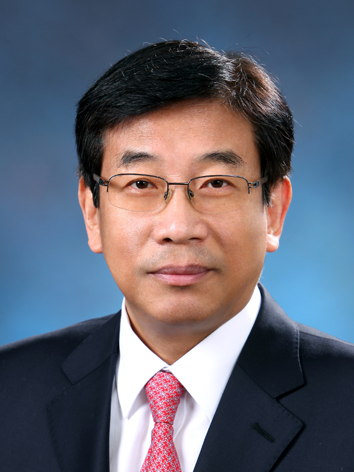 Professor Jae-Kyu Lee Elected to Head the Association for Information Systems
Jae Kyu Lee, HHI (Hyundai Heavy Industries, Co., Ltd.) Chair Professor, College of Business at KAIST, was elected to lead the world major academic society, Association for Information Systems (AIS), from July 2015 to June 2016. Professor Lee will be the first Korean to serve the organization as president. From July 2014 to June 2015, he will serve as president-elect.
Currently, Professor Lee is the Director of EEWS (Energy, Environment, Water, and Sustainability) Research Center at KAIST, focusing on research and development in finding solutions to critical issues facing humanity. He also played a pivotal role in the conclusion of a memorandum of understanding between HHI and KAIST in June 2013 to establish HHI-KAIST EEWS Research Center within the KAIST campus.
The AIS is the premier professional association for individuals and organizations who lead the research, teaching, practice, and study of information systems worldwide.
A news article on his appointment:
Asian Scientist, May 16, 2014
Korean Engineer To Lead The Association For Information Systems
http://www.asianscientist.com/academia/korean-engineer-lead-association-information-systems-2014/
2014.05.19 View 12524
Professor Jae-Kyu Lee Elected to Head the Association for Information Systems
Jae Kyu Lee, HHI (Hyundai Heavy Industries, Co., Ltd.) Chair Professor, College of Business at KAIST, was elected to lead the world major academic society, Association for Information Systems (AIS), from July 2015 to June 2016. Professor Lee will be the first Korean to serve the organization as president. From July 2014 to June 2015, he will serve as president-elect.
Currently, Professor Lee is the Director of EEWS (Energy, Environment, Water, and Sustainability) Research Center at KAIST, focusing on research and development in finding solutions to critical issues facing humanity. He also played a pivotal role in the conclusion of a memorandum of understanding between HHI and KAIST in June 2013 to establish HHI-KAIST EEWS Research Center within the KAIST campus.
The AIS is the premier professional association for individuals and organizations who lead the research, teaching, practice, and study of information systems worldwide.
A news article on his appointment:
Asian Scientist, May 16, 2014
Korean Engineer To Lead The Association For Information Systems
http://www.asianscientist.com/academia/korean-engineer-lead-association-information-systems-2014/
2014.05.19 View 12524 -
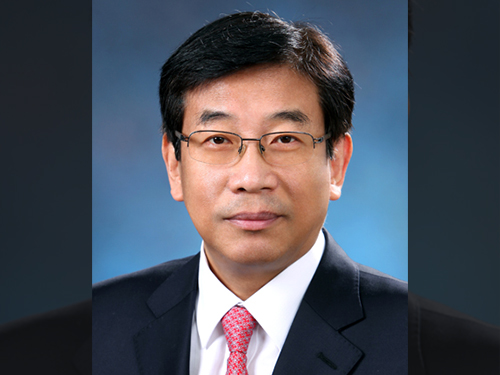 Professor Jae-Kyu Lee Elected to Head the Association for Information Systems
Jae Kyu Lee, HHI (Hyundai Heavy Industries, Co., Ltd.) Chair Professor, College of Business at KAIST, has been elected to lead the world major academic society, Association for Information Systems (AIS), from July 2015 to June 2016. Professor Lee will be the first Korean to serve the organization as president. From July 2014 to June 2015, he will serve as president-elect.
Currently, Professor Lee is the Director of EEWS (Energy, Environment, Water, and Sustainability) Research Center at KAIST, focusing on research and development in finding solutions to critical issues facing humanity. He also played a pivotal role in the conclusion of a memorandum of understanding between HHI and KAIST in June 2013 to establish HHI-KAIST EEWS Research Center within the KAIST campus.
The AIS is the premier professional association for individuals and organizations who lead the research, teaching, practice, and study of information systems worldwide.
2014.05.14 View 11538
Professor Jae-Kyu Lee Elected to Head the Association for Information Systems
Jae Kyu Lee, HHI (Hyundai Heavy Industries, Co., Ltd.) Chair Professor, College of Business at KAIST, has been elected to lead the world major academic society, Association for Information Systems (AIS), from July 2015 to June 2016. Professor Lee will be the first Korean to serve the organization as president. From July 2014 to June 2015, he will serve as president-elect.
Currently, Professor Lee is the Director of EEWS (Energy, Environment, Water, and Sustainability) Research Center at KAIST, focusing on research and development in finding solutions to critical issues facing humanity. He also played a pivotal role in the conclusion of a memorandum of understanding between HHI and KAIST in June 2013 to establish HHI-KAIST EEWS Research Center within the KAIST campus.
The AIS is the premier professional association for individuals and organizations who lead the research, teaching, practice, and study of information systems worldwide.
2014.05.14 View 11538 -
 Thermoelectric generator on glass fabric for wearable electronic devices
Wearable computers or devices have been hailed as the next generation of mobile electronic gadgets, from smart watches to smart glasses to smart pacemakers. For electronics to be worn by a user, they must be light, flexible, and equipped with a power source, which could be a portable, long-lasting battery or no battery at all but a generator. How to supply power in a stable and reliable manner is one of the most critical issues to commercialize wearable devices.
A team of KAIST researchers headed by Byung Jin Cho, a professor of electrical engineering, proposed a solution to this problem by developing a glass fabric-based thermoelectric (TE) generator that is extremely light and flexible and produces electricity from the heat of the human body. In fact, it is so flexible that the allowable bending radius of the generator is as low as 20 mm. There are no changes in performance even if the generator bends upward and downward for up to 120 cycles.
To date, two types of TE generators have been developed based either on organic or inorganic materials. The organic-based TE generators use polymers that are highly flexible and compatible with human skin, ideal for wearable electronics. The polymers, however, have a low power output. Inorganic-based TE generators produce a high electrical energy, but they are heavy, rigid, and bulky.
Professor Cho came up with a new concept and design technique to build a flexible TE generator that minimizes thermal energy loss but maximizes power output. His team synthesized liquid-like pastes of n-type (Bi2Te3) and p-type (Sb2Te3) TE materials and printed them onto a glass fabric by applying a screen printing technique. The pastes permeated through the meshes of the fabric and formed films of TE materials in a range of thickness of several hundreds of microns. As a result, hundreds of TE material dots (in combination of n and p types) were printed and well arranged on a specific area of the glass fabric.
Professor Cho explained that his TE generator has a self-sustaining structure, eliminating thick external substrates (usually made of ceramic or alumina) that hold inorganic TE materials. These substrates have taken away a great portion of thermal energy, a serious setback which causes low output power.
He also commented,
"For our case, the glass fabric itself serves as the upper and lower substrates of a TE generator, keeping the inorganic TE materials in between. This is quite a revolutionary approach to design a generator. In so doing, we were able to significantly reduce the weight of our generator (~0.13g/cm2), which is an essential element for wearable electronics."
When using KAIST's TE generator (with a size of 10 cm x 10 cm) for a wearable wristband device, it will produce around 40 mW electric power based on the temperature difference of 31 °F between human skin and the surrounding air.
Professor Cho further described about the merits of the new generator:
"Our technology presents an easy and simple way of fabricating an extremely flexible, light, and high-performance TE generator. We expect that this technology will find further applications in scale-up systems such as automobiles, factories, aircrafts, and vessels where we see abundant thermal energy being wasted."
This research result was published online in the March 14th issue of Energy & Environmental Science and was entitled "Wearable Thermoelectric Generator Fabricated on Glass Fabric."
Youtube Link: http://www.youtube.com/watch?v=BlN9lvEzCuw&feature=youtu.be
[Picture Captions]
Caption 1: The picture shows a high-performance wearable thermoelectric generator that is extremely flexible and light.
Caption 2: A thermoelectric generator developed as a wristband. The generator can be easily curved along with the shape of human body.
Caption 3: KAIST’s thermoelectric generator can be bent as many as 120 times, but it still shows the same high performance.
2014.04.21 View 21573
Thermoelectric generator on glass fabric for wearable electronic devices
Wearable computers or devices have been hailed as the next generation of mobile electronic gadgets, from smart watches to smart glasses to smart pacemakers. For electronics to be worn by a user, they must be light, flexible, and equipped with a power source, which could be a portable, long-lasting battery or no battery at all but a generator. How to supply power in a stable and reliable manner is one of the most critical issues to commercialize wearable devices.
A team of KAIST researchers headed by Byung Jin Cho, a professor of electrical engineering, proposed a solution to this problem by developing a glass fabric-based thermoelectric (TE) generator that is extremely light and flexible and produces electricity from the heat of the human body. In fact, it is so flexible that the allowable bending radius of the generator is as low as 20 mm. There are no changes in performance even if the generator bends upward and downward for up to 120 cycles.
To date, two types of TE generators have been developed based either on organic or inorganic materials. The organic-based TE generators use polymers that are highly flexible and compatible with human skin, ideal for wearable electronics. The polymers, however, have a low power output. Inorganic-based TE generators produce a high electrical energy, but they are heavy, rigid, and bulky.
Professor Cho came up with a new concept and design technique to build a flexible TE generator that minimizes thermal energy loss but maximizes power output. His team synthesized liquid-like pastes of n-type (Bi2Te3) and p-type (Sb2Te3) TE materials and printed them onto a glass fabric by applying a screen printing technique. The pastes permeated through the meshes of the fabric and formed films of TE materials in a range of thickness of several hundreds of microns. As a result, hundreds of TE material dots (in combination of n and p types) were printed and well arranged on a specific area of the glass fabric.
Professor Cho explained that his TE generator has a self-sustaining structure, eliminating thick external substrates (usually made of ceramic or alumina) that hold inorganic TE materials. These substrates have taken away a great portion of thermal energy, a serious setback which causes low output power.
He also commented,
"For our case, the glass fabric itself serves as the upper and lower substrates of a TE generator, keeping the inorganic TE materials in between. This is quite a revolutionary approach to design a generator. In so doing, we were able to significantly reduce the weight of our generator (~0.13g/cm2), which is an essential element for wearable electronics."
When using KAIST's TE generator (with a size of 10 cm x 10 cm) for a wearable wristband device, it will produce around 40 mW electric power based on the temperature difference of 31 °F between human skin and the surrounding air.
Professor Cho further described about the merits of the new generator:
"Our technology presents an easy and simple way of fabricating an extremely flexible, light, and high-performance TE generator. We expect that this technology will find further applications in scale-up systems such as automobiles, factories, aircrafts, and vessels where we see abundant thermal energy being wasted."
This research result was published online in the March 14th issue of Energy & Environmental Science and was entitled "Wearable Thermoelectric Generator Fabricated on Glass Fabric."
Youtube Link: http://www.youtube.com/watch?v=BlN9lvEzCuw&feature=youtu.be
[Picture Captions]
Caption 1: The picture shows a high-performance wearable thermoelectric generator that is extremely flexible and light.
Caption 2: A thermoelectric generator developed as a wristband. The generator can be easily curved along with the shape of human body.
Caption 3: KAIST’s thermoelectric generator can be bent as many as 120 times, but it still shows the same high performance.
2014.04.21 View 21573 -
 KAIST and Hancom Inc. Join Hands for Software Development Projects
KAIST
(Steve Kang) and Hancom Inc. (Sang-Chul Kim) made an agreement on the 8th
of April for a partnership to jointly develop software industry. After the
ceremony, a TFT (Task Force Team) for industry-university collaboration was
established and a seminar to discuss cooperative projects ensued.
KAIST and
Hancom Inc. agreed to cooperate in three main areas at the seminar. They
included enhancing manpower in the Korean software industry, the technical
development of software applications, and creating a business model for the
expansion of the Korean software market globally.
KAIST
president Steve Kang said, "Noteworthy research achievements will result
from this great partnership with Hancom Inc. I believe this alliance will play an
important role in the development of Korean software industry."
“The
combination of KAIST's excellent talents and Hancom's software know-hows will produce market-winning results. We hope that mutual developments from the
two organizations through this practical industry-university collaboration will inspire many software companies to follow suit,” said Sang-Chul Kim, the president of Hancom
Inc.
2014.04.11 View 8432
KAIST and Hancom Inc. Join Hands for Software Development Projects
KAIST
(Steve Kang) and Hancom Inc. (Sang-Chul Kim) made an agreement on the 8th
of April for a partnership to jointly develop software industry. After the
ceremony, a TFT (Task Force Team) for industry-university collaboration was
established and a seminar to discuss cooperative projects ensued.
KAIST and
Hancom Inc. agreed to cooperate in three main areas at the seminar. They
included enhancing manpower in the Korean software industry, the technical
development of software applications, and creating a business model for the
expansion of the Korean software market globally.
KAIST
president Steve Kang said, "Noteworthy research achievements will result
from this great partnership with Hancom Inc. I believe this alliance will play an
important role in the development of Korean software industry."
“The
combination of KAIST's excellent talents and Hancom's software know-hows will produce market-winning results. We hope that mutual developments from the
two organizations through this practical industry-university collaboration will inspire many software companies to follow suit,” said Sang-Chul Kim, the president of Hancom
Inc.
2014.04.11 View 8432